Hope for autism
Health and Behavior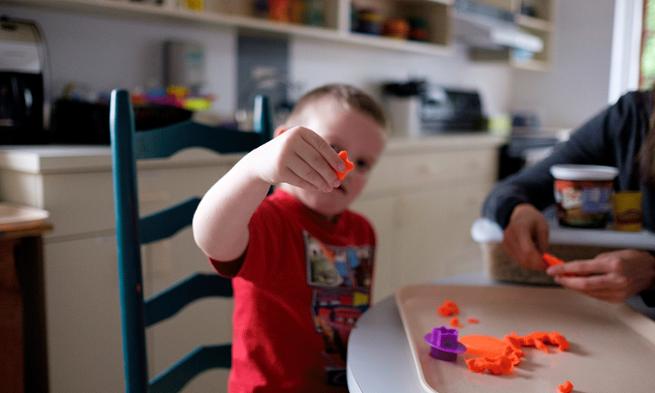
SUMMARY: The prevalence of autism has created a skyrocketing need for innovative treatment programs. Area families have discovered not only innovative programs but also a network of support at JMU.
By Martha Bell Graham
Download the Madison app (iOS & Android) to view this story and discover more features on your device for an immersive, interactive experience!
When Laurie (’15M) and Robert Weese retired from the military, they expected to move. But having two sons diagnosed with autism, they considered their options carefully. “We started checking out locations — Tennessee, New Jersey, Indiana, Montana … all over the place.”
While traveling through the Shenandoah Valley one day, they stopped at the Rockingham County School Board offices, where they met Scott Hand (’79, ’80M), director of pupil personnel services. He took them to visit county schools. What the Weeses found was a community supportive of autism and engaged with a university replete with services and opportunities to help their sons.
It’s not uncommon for parents to seek out a school district that will support their child and then move there, says Keri Bethune, coordinator of the autism certificate program at JMU, because support for children and families is essential in addressing autism and its many ramifications.
What the Weeses found was a community supportive of autism and a university replete with services and opportunities to help their sons.
Diagnosis: Mystery
First identified in 1911 as a subgroup of schizophrenia, Autism Spectrum Disorder is a developmental disability causing social, communicative and behavioral difficulties. It became a separate diagnosis in the 1940s, but until the 1960s parents were routinely advised to institutionalize their children. The assumption was that nothing could be done for children locked in their own minds, some without the ability to speak and many without the skills to interact socially.
Autism has been blamed on everything from a lack of mother’s love to genetics to environment to vaccines — the latter, a myth discredited by multiple scientific studies. Real progress in addressing autism began in the 1980s, when treatment options emerged and parental pressure, allied with professionals, began to unlock a diagnosis that had created more mystery and anxiety than clarity.
Gay Finlayson (’76) understood the anxiety. More than three decades ago, she and her family were living with a child they did not understand. The only diagnosis Finlayson received for her daughter, Marit, was Pervasive Developmental Disorder Not Otherwise Specified. In other words, no one really knew what was wrong.
Finlayson, though, had an advocate in her mother, Elizabeth Finlayson, founder of JMU’s Bachelor of General Studies program (now the Bachelor of Individualized Studies). “My mother’s connection to the world of higher education was important,” Finlayson says. In fact, it was her mother’s encouragement that led Finlayson to have her daughter evaluated at JMU’s Child Development Center. The diagnosis was autism.
Getting a correct diagnosis was only the beginning for Finlayson. Her insurance company dropped the family, and services were extremely limited, creating a problematic irony: “Most families had to wait for services,” she says, yet Finlayson knew the earlier the intervention, the better the outcome.
Finlayson’s answer was to advocate for her family, which would soon expand to three children, including a son also diagnosed with autism — a coincidence that is not uncommon. Her personal journey became one that thousands of parents travel in search of help for their children.
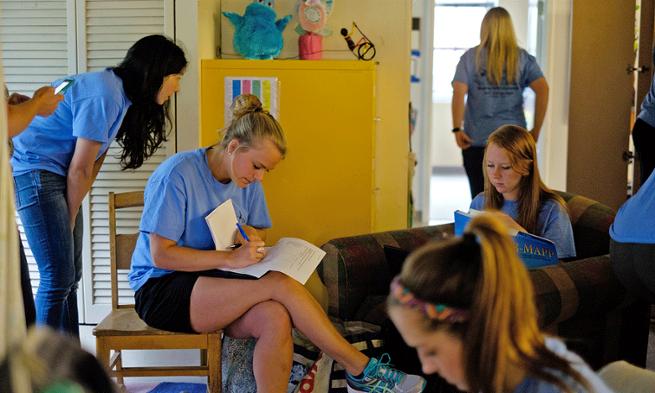
The promise of successful treatments
For many years, insurance companies refused to pay for autism services, offering a single excuse: There is no viable treatment. Parents disagreed. Research in applied behavioral analysis, along with extensive and growing anecdotal evidence, convinced them that treatment was indeed possible.
“What happened,” says Trevor Stokes, professor of graduate psychology and a licensed applied behavioral analyst, “is that the parents who were the consumers of services … could see that it was effective.” When pediatricians diagnosed autism and prescribed ABA treatments, he says, insurance companies, persuaded by research — much of it emanating from universities — were compelled to comply.
Despite the acknowledgement that ABA worked, there were other limiting factors: Who, for instance, would provide the prescribed treatment, especially as the number of diagnoses skyrocketed? According to the Centers for Disease Control, today 1 in 68 children is identified with ASD, an increase due in part to greater public awareness and an expanded definition. In 2013, the American Psychiatric Association revised the Diagnostic and Statistical Manual of Mental Disorders to lump together several diagnoses, including Asperger’s, a mild form of autism, under the single Autism Spectrum Disorder.
The prevalence of autism has created a need for, if not a shortage of, ABA professionals, Stokes says. He adds that the Affordable Care Act has expanded coverage of mental illnesses in general, plus this year the Virginia General Assembly upped the age limit for required services from 6 to 10 — a change set to begin in fiscal 2016.
To address the need for more ABAs, five years ago JMU developed a collaborative program within the College of Health and Behavioral Studies that prepares graduates to become licensed ABAs. The designation, granted by the commonwealth’s Board of Medicine, requires 1,500 hours of supervised practicum work followed by a board certification exam. Steered by JMU’s three licensed ABA professionals on faculty — Stokes; Keri Bethune, who also serves on the governor’s advisory board on licensing ABAs; and Dan Holt of the psychology department — the program is an integral part of a large network of services and opportunities available to the autism community through JMU.
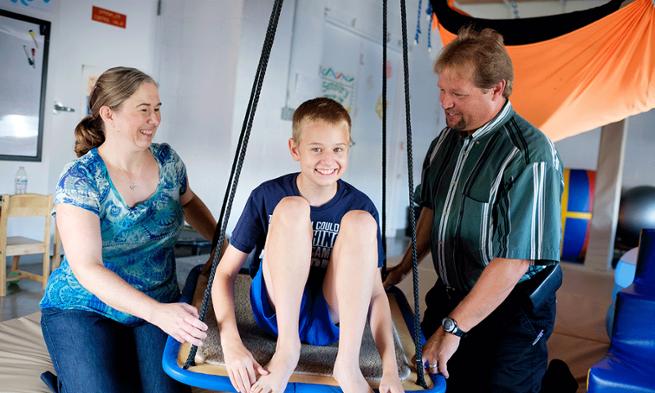
A network of help
Every week, Garrett Weese, who first came to JMU as a nonverbal 7-year-old, visits Occupational Therapy Clinical Education Services, a clinic within the Institute for Innovation in Health and Human Services. Over the past six years, he has made slow but steady progress. He makes eye contact now, his mother says, and has an increasing vocabulary. He also dresses himself and does family chores. Garrett’s brother Nathan has benefitted as well. Nathan has “only a little bit of autism,” as his mother once described to him. Nathan is now a successful high-school student with a bright future.
OTCES is one of several clinics on campus that offer autism services. These include an ABA clinic under IIHHS and a Speech-Language-Hearing Applied Laboratory, part of the Department of Communication Sciences and Disorders. Each provides a different therapeutic approach.
‘IPAC is very innovative because we’ve brought together people from different disciplines. We can do the merged treatment at one time … which is not a traditional approach, but this is the creative part of what we do. ’—Trevor Stokes, professor graduate psychology and a licensed applied behavioral analyst
These different approaches converge in the university’s Interprofessional Autism Clinic. Also under the umbrella of IIHHS, IPAC offers blended autism services to the community. Stokes explains: “IPAC is very innovative because we’ve brought together people from different disciplines — from ABA, from psychology, occupational therapy, and speech and language pathology. We can do the merged treatment at one time … which is not a traditional approach, but this is the creative part of what we do.”
At the same time, IPAC provides a fertile experiential learning environment for JMU students who will eventually work with children on the spectrum. One such opportunity is JMU’s summer autism camp, which is run by occupational therapist Liz Richardson and Marsha Longerbeam, a speech and language pathologist.
While the benefits to children with autism are indisputable, there is added benefit for parents. “When [parents] come in for an appointment, they don’t just drop the child off,” Stokes says. “There’s an expectation they’ll be involved in some way. As a result, parents learn strategies and therapies to help their children that might otherwise take years of trial and error.”
The education component
“No child with autism is like another child with autism,” Bethune says. “It is very much a disability where educational plans, behavior plans and strategies all have to be individualized.”
Bethune, who coordinates the behavior specialist concentration within the College of Education, is a regular presence in local elementary and secondary classrooms, supervising JMU students and teachers who work with children with autism.
“It’s really, really important because we know that autism is one of those disability areas where kids could look a million different ways and be served in a variety of settings,” Bethune says. “They could be in the general education classroom, with no extra support, all the way to a separate school, depending on the level of need of the student. What we know is that getting good evidence-based interventions early makes a very big difference in the outcome for these students.”
A year ago, COE began offering a one-year course sequence leading to an autism certificate — an extension of the university’s traditionally strong exceptional education program.
“The cool thing about the autism certificate program,” says Bethune, “is that it’s not just education students.” It is open to students in all majors and is offered at both the undergraduate and graduate levels. Right now there’s a waiting list to enroll.
The upshot of this kind of collaborative education is that JMU is preparing students in ways that create a kind of autism advocacy throughout the commonwealth.
Scott Hand represents the hundreds of educational professionals coming out of JMU whose impact in local schools is significant. In Rockingham County, autism programs employ the Competent Learned Model, which is based on the principles of ABA, direct instruction and precision teaching.
Robert Weese, Garrett’s father, is especially appreciative of this impact. Before coming to the valley, he would drop by Garrett’s school and find him isolated in a classroom. “Educationally he was being left behind because the teachers were not required to learn. Here in Rockingham County, they are encouraged to learn about autism, and JMU helps that.”
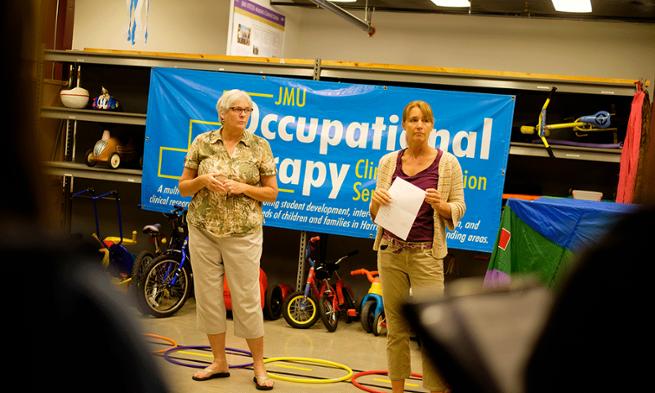
Tangential opportunities
Beyond IPAC, the campus clinics and school systems full of JMU-educated professionals, other services and opportunities are available to families. Some are associated with Madison directly while others are tangential — like music.
Laurie Weese’s weekly calendar often includes a visit to Studio B Music for Living LLC, a private music therapy studio in Rockingham County. “Garrett loves to sing,” she says.
“Science tells us that engaging in a musical experience activates almost our entire brain,” says Brianna R. Priester, a licensed music therapist, instructor of music at JMU and owner of Studio B. “Individuals who may not be able to verbally communicate may be able to sing. The music works around the language barrier and spreads throughout the brain to activate different triggers.” Music therapy can also help with the development of social skills, daily-living activities like chores and self-care, emotional regulation, stress and anxiety management, and self-expression, she says.
Additionally, children with autism benefit from physical and sensory experiences. That is the rationale behind JMU kinesiology professor Tom Moran’s Project Climb, an outreach program of adapted physical education for children with disabilities, including autism.
John “Jack” Martin, a utility locator in JMU Facilities Management, had a similar idea when he, along with his wife Becky (’74) and retired educators Sue (’78) and Philip (’79) Hutchison, developed a baseball program for children with disabilities in nearby Bridgewater, Virginia. Neither official nor clinical, Martin’s program nonetheless provides something extra: “It gives Garrett a chance to feel like an ordinary boy,” Robert Weese says.
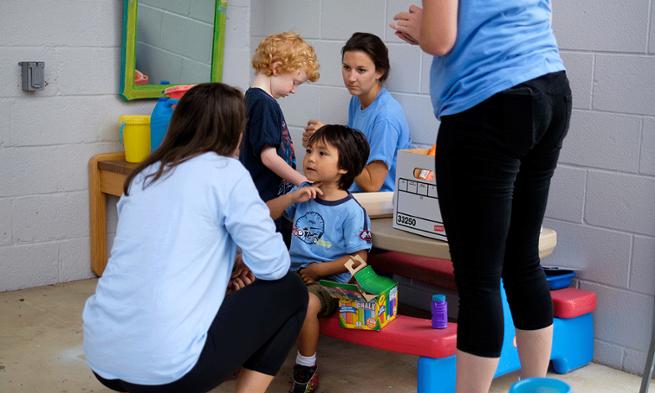
A family matter
Ask Allison Lindsay (’16) what is wrong with her brother and you’ll get a swift answer: “Nothing. He’s just different.”
Autism has always been a part of Lindsay’s life. Her older brother Sam and younger sister Mikela both have autism. While Mikela falls on the milder end of the spectrum, Sam, who also has epilepsy and some degree of cerebral palsy, is profoundly affected. To Lindsay, though, he’s just her brother.
Lindsay knows firsthand one truism about autism: It impacts the whole family. “I remember going to kindergarten,” she says, “and I had no idea that not everybody had a brother like Sam … but I learned that that wasn’t the case. But I am so grateful to have him. Our family is a very chaotic, fast-beat family, and I think Sam gives us the opportunity to step back. He teaches us patience, and he teaches us just to be empathetic and aware. He’s my favorite person.”
Like so many people who are close to autism, Lindsay sees the disability but also the person. Autism is part-handicap, part-barrier, she says, but it can also come with astonishing talents and potential. One of those is intelligence. “You see a whole range of intellectual levels,” Stokes says, from incidences of autism with intellectual disability “to people on the spectrum whose intelligence is very high.”
Understanding the family dynamic and recognizing a need to support local autism families prompted two JMU professors, Debi Kipps-Vaughan in graduate psychology and Julie Strunk in nursing, to organize a support group for families, especially those with adolescent children on the spectrum. “Teenagers with autism have a unique set of needs,” including independence, sexuality and transition planning for when they leave high school, Kipps-Vaughan says. Now families can come together to support and learn from each other.
Another positive outcome from the support group is the benefit to JMU psychology students, who provide child care. “They get to see and interact with whole families,” Kipps-Vaughan says, “something they could never learn in a classroom.”
What the future holds
Often overlooked by the media, and to some degree by public opinion, is the fact that, as Finlayson says emphatically, “little children with ASD grow up to be adults with ASD.”
For professionals like Bethune, it’s a concern. “It’s a hot topic,” she says, “because the supports for adults look very different than the supports for children. We still have to have transition services to figure out what’s going to be next for that student. … There’s no mandate for us to continue. So there are a lot of different options. For example, if the child wants to go to college, transition services should help with the application process and then the child has to go through that university’s Office of Disability Services [to] get whatever accommodations they need. They have to advocate for themselves. So self-advocacy is really, really huge.”
‘We want all students to succeed at JMU, and that includes students with ASD.’ —Matt Trybus, assistant director of the Office of Disability Services
Self-advocacy is exactly what JMU professor of computer science Brett Tjaden encourages the dozen or so ASD students he advises every year to practice. The students are referred to him by the Office of Disability Services.
“One of their big challenges,” Tjaden says, “is social interaction. That’s hard enough for most people entering college. But for people with that disability, it’s a lot harder. … Getting along with roommates is certainly one of them. Interacting with teachers is another.”
Tjaden has a special empathy for these students because he understands how much potential they have. “With most differences, there are strengths and weaknesses,” he says. “Very often we tend to focus on the weaknesses that come with a particular disability and not enough on the strengths.”
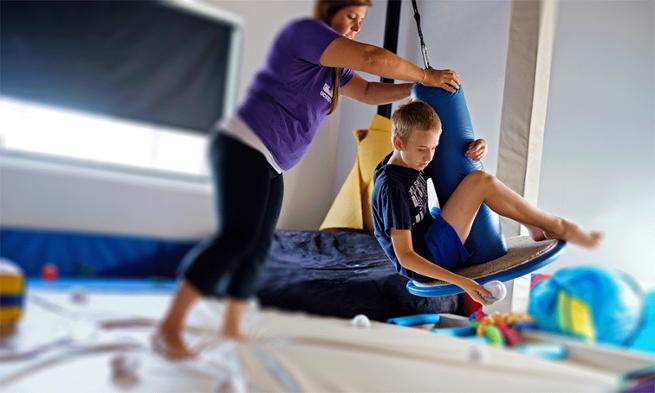
The gift of autism
Until the mysteries of autism are unlocked, families affected by the disorder will continue to focus on the positives.
“It bothers me when people kind of pity me: ‘Oh, I’m so sorry you have an autistic son,’” Laurie Weese says. “But I say, ‘He’s great. He’s just different. He doesn’t talk … but he’s a great kid.”
Siblings of children on the spectrum exhibit a special empathy. “I am not a naturally patient person,” Lindsay admits. “But Sam has taught me that everybody has setbacks, whether it is an experience or a disability, and he makes me so much more aware of that. I just love him so much.” Lindsay has told her parents unequivocally that she intends to take care of her brother for the rest of his life.
The same is true of Garrett Weese’s brother Connor. “Connor is a wonderful kid,” Robert Weese says. “He’s the youngest, but at the same time he has big shoulders. He’s had to help a lot, especially with Garrett. It’s easy for Laurie and me to forget he’s the youngest because we rely on him to help. I thought it would be a problem, but now he’s enthusiastic. If we go roller skating, he says, ‘I’ll go with Garrett,’ and he loves doing it.”
Families like the Weeses and the Finlaysons would agree that there is a certain joy in embracing ASD individuals for who they are and what they can offer. Perhaps that is a lesson autism can teach us all.
